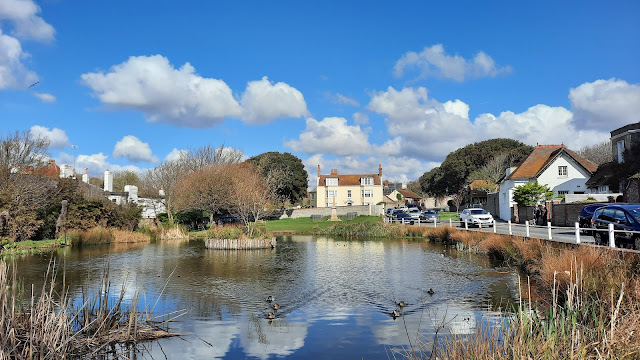Last weekend we visited Sussex for our niece's graduation in Brighton. Alfred, Lord Tennyson made his home at Aldworth, near the lovely village of Lurgashall. His description of Sussex sums up why so many writers and artists chose to make their home in this beautiful county.
You came, and looked and loved the view
Long-known and loved by me,
Green Sussex fading into blue
With one gray glimpse of sea.
We stayed in Rottingdean and, whilst we were there, soaked up the multifarious literary connections in the area.
 |
| The Elms, home of Rudyard Kipling, overlooking the village pond |
 |
| Angela Thirkell's home |
 |
| Angela Thirkell's memorial in the church yard |
William Watson is a less well known former resident of Rottingdean. Watson was a Victorian poet, who fell out of favour. He was a prolific poet of the 1890s, and a contributor to The Yellow Book, though without "decadent" associations, and on the traditionalist wing of English poetry. His reputation was established in 1891, with the publication of "Wordsworth's Grave", and the appearance in The Fortnightly Review, On the occasion of Alfred Tennyson's death in 1892, he was a strong candidate to be his eulogist, the commission resulting in his "Lachrymae Musarum" . His house was almost opposite the White Horse Hotel, in Rottingdean, where we stayed.
Finally, in my roundup of writers associated with Rottingdean is Elsie J Oxenham, author of the Abbey Girls series. In addition to her most famous series, she also wrote the Sussex Books, all set in a fictional school near Rottingdean (probably Roedean).We had a splendid time mooching around Rottingdean and moved onto a few more Sussex literary hotspots.
All in all a splendid visit!
